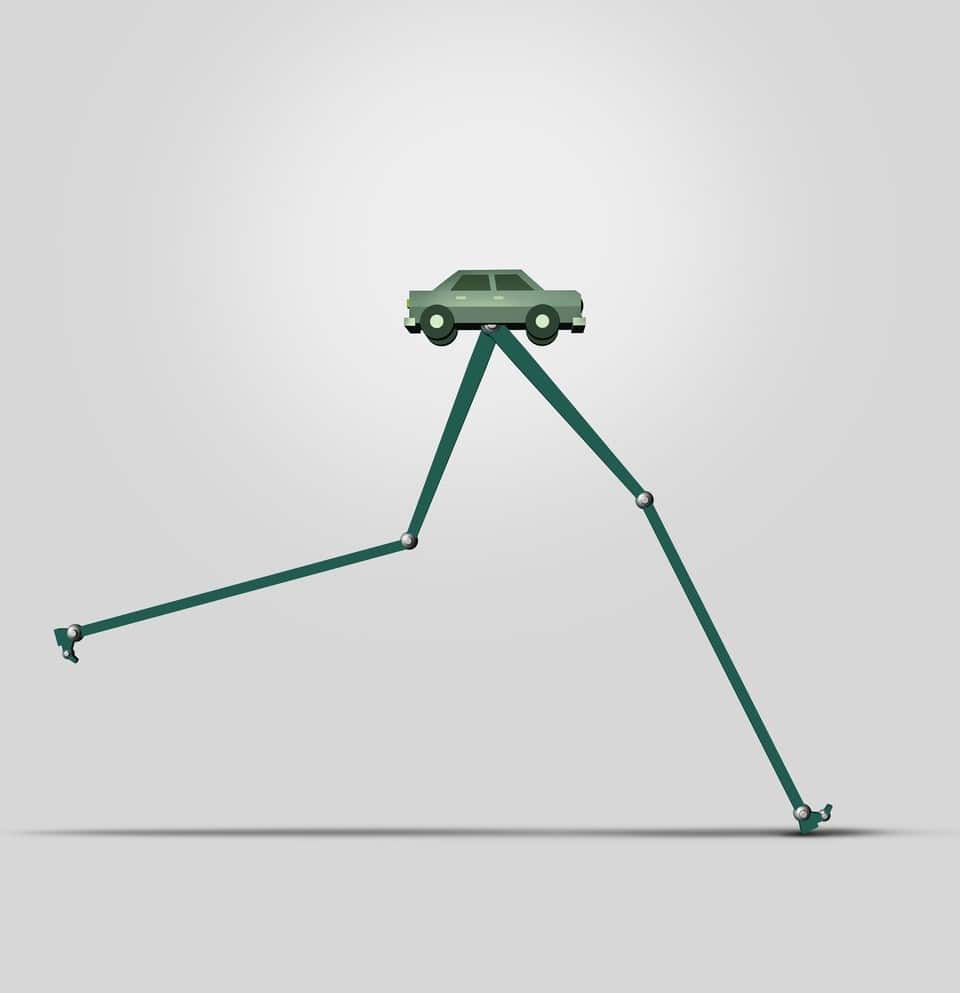When I meet clients for the first time, I find that they often have a pre-conceived idea that the job of their family lawyer is to ‘file’ their case with the Court, and await a hearing. I am surprised that the perception of our legal system is that those who are enduring separation and divorce are mere ‘passengers’ in that system, and have so little part to play in the decision-making about their own futures.
For many couples, launching straight into litigation is to replicate the Chinese proverb – sending a cannon to kill a grasshopper. Modern family law is much more dynamic than that, and this means that there are many options for separated couples and parents to resolve their dispute without ever having to see the inside of a courtroom. The menu of ‘out of court’ processes which can be used (referred to by lawyers as ‘alternative dispute resolution’ options) is in fact very extensive, and includes:
- solicitor-led negotiations,
- mediation,
- Early Neutral Evaluation, and
- arbitration.
These options can be appropriate when a ‘softer’ approach (in comparison to Court litigation) is required, such as where children are involved, or where a significant business requires protection. The reason for that is simple – the conflict often associated with litigation is hard for children to observe, and it can be destructive (and sometimes even fatal) to a business (see my Blog ‘How to Protect Your Business in Your Divorce’).
Collaborative Divorce
A process being used successfully by couples to resolve family law problems is the ‘collaborative divorce’. It can deliver practical and durable outcomes for families, and in particular, for business owners. (The word ‘divorce’ is used loosely here, and means the resolution of financial issues and/or parenting issues arising from family breakdown, as distinct from the formal dissolution of a marriage).
It derives from a collective of American family lawyers who, in the 1990s, resolved that they could help their clients resolve disputes without going to Court. It is a concept which has since then spread throughout the world, arriving on Australian shores in the early 2000s.
Since then, family lawyers in Brisbane and on the Gold Coast, where I practise, are offering the collaborative divorce process to clients as a means to resolve their family law problems.
What does collaborative divorce involve?
- You and your partner sign a contract saying that you will work together, with your family lawyers, in resolving your dispute, and that you will not go to Court. That’s right, you are taking the spectre of Court proceedings off the table. Court litigation is a concept to which you agree not to return unless the collaborative process fails entirely (in which case you will be required to engage new lawyers). This means that you are both committing entirely to making the collaborative process ‘work’.
- You and your partner undertake to be fair and honest in your dealings with each other, and to communicate in a respectful way, so as to focus your energy, and avoid becoming side-tracked by non-legal issues;
- You and your partner will identify the things which are important for you to achieve in your divorce – your goals and objectives – and you will reveal to each other why those things are important to you. These ‘interests’ will be recorded, and they will become the focus of you both in developing, and considering, settlement outcomes.
- You and your partner agree to see to it that you are each possessed of all information necessary to make a decision. This means, in a financial case, providing all documents and data (to clarify the pool of property, how it is held, and its value).
- You both, with your lawyers, agree on a series of meetings in order to complete the steps above – progressively, you move through the steps of identifying your goals and objectives; collecting and circulating all necessary financial information; developing settlement options; and recording any option which is selected by you both as the outcome in a binding way. These meetings occur at the pace which is necessary in your case, so that you can both ‘keep up’.
- You and your partner are independently represented by lawyers all the way, and have access to your lawyer any time you need help, just as in any other legal process.
- You can agree to introduce other experts to the process where that is necessary – a child expert to deal with a particular parenting issue; an accountant to advise on a challenging tax issue;
- At the end of the process, your agreed outcome is recorded in a binding and enforceable way (just as if you had gone to Court).
The “Self-Drive” Divorce Process
As what is meant by the expression ‘collaborative divorce’ is not immediately apparent, I often explain it in terms that it is a ‘self-drive’ divorce process. Rather than being the ‘passengers’ in a litigation process they may have had in mind, separated couples and parents who choose the collaborative divorce are instead revealing to each other:-
- What it is they want to achieve;
- Why to achieve those goals is important to them;
- What information they need to be able to make a decision about their legal problem;
- How that information will be gathered, assembled, and circulated (and who will be doing those things);
- Outcomes which they think will achieve their goals;
- What assistance and resources they require from each other, their lawyers, and any third-party experts;
- The timing they prefer, and the pace at which they are comfortable proceeding;
- How these steps will be funded.
Collaborative Divorce vs Court Proceedings
The collaborative divorce is therefore unlike any Court-based process, in that:-
- You and your spouse each have a voice. In a litigation situation, a Judge will follow an established decision-making process, and declare an outcome, probably without ever having heard from the parties about what is important to them. In the collaborative divorce process, however, each of you have been very clear about what you want from day one, and the settlement options are directed towards those objectives;
- The same financial and other information as would be exchanged in 2 years’ worth of litigation is being disclosed – it is just happening promptly and efficiently – only that which is necessary to make a decision is being disclosed, and it is being done to an agreed timetable, and in a way in which everyone understands why it is important and necessary;
- You and your spouse can agree to proceed at a pace which is appropriate – if you need to pause in order to have a particular issue examined (such as the value of an item of property, or a particular need of your children), then you can do so – you are not ‘stuck’ with the timing of Court proceedings, and can accelerate and decelerate, and change course, as is required;
- Instead of the focus being on percentage outcomes, it is on reaching an outcome which achieves that which is important for you both (or as many of those things as is possible). Where a Judge must effectively ‘force’ a financial outcome on you both, the self-drive divorce allows much more flexibility. You can ‘paint outside the lines’ in coming to an agreed outcome which achieves all or part of your objectives, and which you feel you can live with.
In essence, instead of the focus being on fitting yourselves into the traditional Court process, you are tailor making a dispute resolution process which gives you what you need.
The self-drive divorce is a powerful tool for business owners. Indeed, most of the collaborative divorces I have completed have had, at their heart, a significant family business.
Often the value of a business is such that it comprises a significant part of the pool of relationship property. Neither party wants it to be sold, or to be put under the financial strain of borrowings, to fund a cash property settlement in a lump sum. Yet that is very possibly what would occur in Court. Instead, a more creative outcome (possibly involving payments over time, or a controlled future sell-down of part of the business) can be agreed between the participants.
Protecting Your Business
In my experience, the collaborative divorce process is ‘lower impact’ on business, in that:-
- The importance of the business not being put under strain is mutually acknowledged from the beginning – the documents required to be produced by the business proprietor and accountants is approached more thoughtfully; any valuation is conducted discreetly; and ‘news’ that the business is the subject of a family law dispute can be contained (from competitors) – things which usually create enormous challenges in the litigation process are completed with care as to the consequences, and to an agreed timetable;
- Rather than having the business proprietor(s) tied up in Court litigation for years, the collaborative process can be completed efficiently, and at less legal cost – this means that the period in which the attention of key people in the business is on the divorce, and therefore other than on the business, is limited, and the legal costs of the divorce (likely funded from the business) can be managed;
- The phenomenon whereby management and staff of the business live in suspended animation, aware of the family law dispute, but uncertain as to its impact on the business, and them and their jobs, is avoided (as is the impact on productivity of this phenomenon).
Don’t Be A Passenger In Your Divorce
In litigation, the reference above to being a ‘passenger’ in your own divorce is apt. While they may know the destination, the passenger has no control over the speed and timing of the journey. They are ‘along for the ride’. The endgame is a Judge making a decision for you, and you are in that system, incurring time and legal costs, until then. Ultimately, the destination may look nothing like you had in mind back at the start of the journey.
Those who will be attracted to the collaborative divorce are those who identify that they potentially have too much to lose sitting in the passenger seat. Those who prefer to have more control over, and more input into, their case, and who prefer to apply their time and financial resources to the things which they deem important (rather than those which are important in a well-trodden legal system), will be those who choose to ‘self-drive’ their divorce.
————————————-
For resources about collaborative divorce, there are collaborative law organisations in almost every State (in Queensland, see www.qacp.org.au) (and a national collaborative body is in the process of establishment at the time of writing).
GET HELP NOW
If you require family law advice or assistance, contact our experienced family lawyers. BGM Family Lawyers is a specialist Family Law Firm based in Coomera on the Gold Coast.
We can assist with all facets of separation and divorce such as Financial Issues, Spousal Maintenance, Parenting Arrangements, Child Support and Financial Agreements.
Call BGM Family Lawyers today on 1300 246 529.


